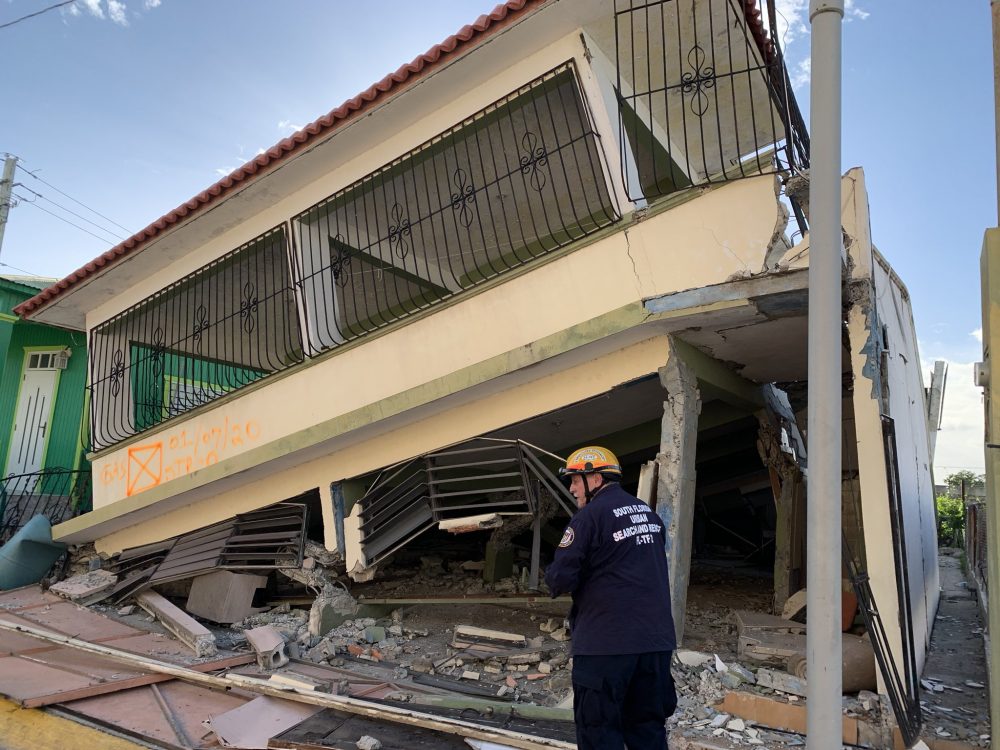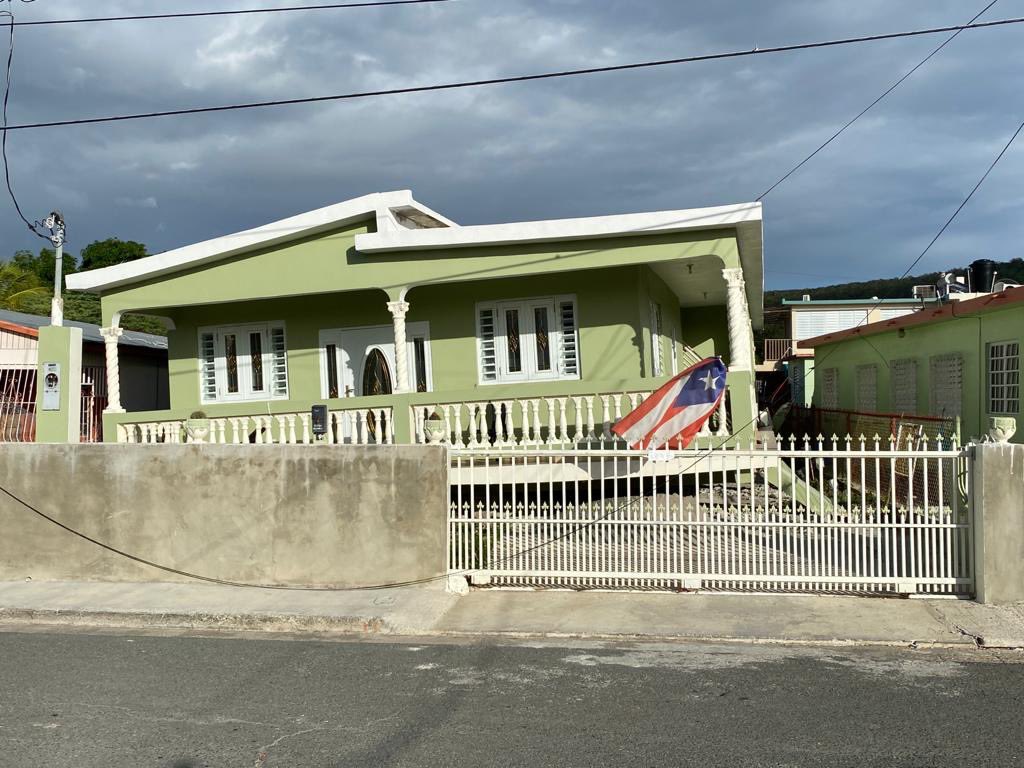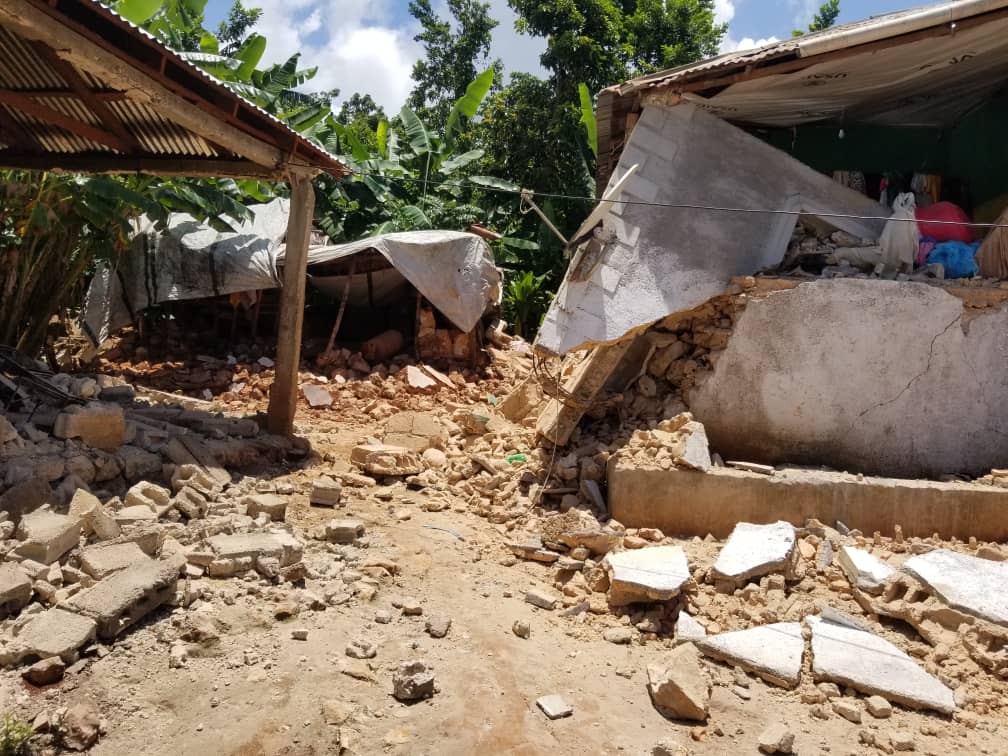
Last updated:
Puerto Rico Earthquakes

Overview
Puerto Rico experienced an unprecedented series of ongoing earthquake swarms, with more than 9,000 earthquakes since December 2019 in the Ponce region of Southern Puerto Rico.
These include the strongest earthquakes in Puerto Rico in over a century. The director of Puerto Rico’s Seismic Network said he had never seen anything like this in his 29 years with the organization.
There were three significant quakes and each had many strong aftershocks. On Jan. 6, 2020, there was a 5.8 magnitude earthquake, followed on Jan. 7 by a 6.4 magnitude earthquake. On Jan. 11 there was an aftershock that registered at 5.9 magnitude. Many of these aftershocks were of significant magnitude and made relief and recovery difficult. Over two dozen quakes had a magnitude of 4.5 or more. On Wednesday, Jan. 15, there was a 5.2 earthquake and on Jan. 25, a 5.0 magnitude earthquake hit near Guayanilla. Despite these strong earthquakes and aftershocks, most of the thousands of earthquakes were in the minor range between 2.0 and 3.0 magnitude.
(Florida Task Force 2, FEMA’s Urban Search and Rescue team, and Miami Fire Rescue conducting damage assessments in Guanica, Puerto Rico. (Source: Miami Fire Rescue)
On May 2, this same area was rocked by a magnitude 5.4 earthquake that caused new damage in Ponce and was felt throughout the same area as the earthquakes in January. The United States Geological Survey (USGS) stated that this was an aftershock of the Jan. 7 magnitude 6.4 earthquake, and included it in the earthquake swarm that they had been tracking since January. Another magnitude 4.8 aftershock struck the area at the beginning of August, causing further damage and slowing repairs.
Latest Updates

Disaster Rocks Puerto Rico Again. Attention is Needed.
What was the impact on communities?
The initial damage estimate in January was $3.1 billion. It was estimated that the Costa Sur power plant, the island’s largest, would take up to a year to repair after suffering significant damage. It produced up to 970 megawatts, about one-quarter of the island’s power. The remaining plants were required to run at or near capacity to meet demands. The government requested temporary generators from FEMA to assist with power needs. Members of Puerto Rico’s electrical and irrigation workers’ union (UTIER) were able to bring the power plant’s first generator back online by the end of July, only seven months after it was severely damaged.
Who was affected and in what ways?
The hardest hit towns were Guánica, Utuado, Guayanilla, Peñuelas, Ponce and Yauco. The governor authorized $2 million in assistance to support these towns. In the town of Guayanilla, a picturesque rock formation known as Punta Ventana was destroyed by a quake on Jan. 6 after days of weakening caused by tremors.
More than 600 buildings were damaged after the Jan. 7 quake including homes, a church and other buildings that were destroyed in Guayanilla. In Yauco, 3,261 homes were damaged including 62 that collapsed and 245 that are compromised and at risk of collapsing in the continuing quake activity. Several thousand people took refuge in evacuation shelters, and throughout the area, people slept outside for fear of their homes collapsing. However, heavy rains resulted in several shelters being evacuated temporarily due to flooding.
One person was killed in the Jan. 7 quake and several others were injured. Three people died from medical conditions that are deemed connected to the earthquake. Two people in Yauco died of heart attacks; one man died in his home on Jan. 8 and a 92-year-old woman died while sleeping outside on Jan. 9. A 76-year-old woman in Guayanilla also died from a heart attack she experienced during a large aftershock overnight on Jan. 9-10.
The Jan. 7 quake also changed the hydrological features in the area, with the Rio Yauco and Rio Guayanilla both showing increases in the cubic feet per second flows. The Coamo hot springs, located over 43.5 miles from the site of the earthquakes, saw both water temperature and water pressure increases since the Jan. 7 tremblor.
Potential duration of aftershocks
These earthquakes represent an extension of the newly-discovered Punta Montalva Fault on the southwest coast of Puerto Rico. In a conversation with the Center for Disaster Philanthropy (CDP), the USGS stated that these were unprecedented and unpredictable earthquake swarms and that they are still working to understand the nature of the swarms. The graphic below, from the USGS, indicates the number and location of earthquakes between Dec. 22, 2019 and Dec. 3, 2020. The USGS released a report stating that this sequence of earthquakes may continue for over a decade or more.

Short and long-term counseling and mental health intervention for children and adults.
Given that there is still trauma from Hurricane Maria, and the nature of this earthquake swarm – unknown, unpredictable and ongoing – it is likely that there will be significant mental health needs on top of physical reconstruction.
Clean-up, debris removal and waste management.
As with all island-based disasters, waste management is a key component to recovery from disasters.
Provision of power and water.
It is important to invest in power and water solutions that are sustainable and renewable – i.e. water filtration vs. water bottles, solar power generators vs. diesel.
Rebuilding and reconstruction of homes.
Where possible, rebuilding should focus on improving the quality of construction and investing in earthquake reduction efforts.
Support ongoing tourism.
Not all of the island is affected and tourism is an important component of economic development and business recovery.
Innovative building programs and education.
Poorly constructed buildings collapse in earthquakes; falling debris is the greatest cause of death. Some experiments with straw houses and bamboo are underway but overcoming local superstitions about alternative building materials is necessary.
Technical assistance and knowledge from prepared communities to those at risk.
Cities and countries that experience the most frequent smaller earthquakes often are extremely well-prepared while others that are due for a major earthquake may not be.
Investment in water system initiatives.
Vital services are important to stop the spread of disease. Yet in an earthquake, infrastructure often is damaged. Alternative water supplies can be vital to stopping disease. Both small-scale water supplies—for rural areas—and large systems for urban centers are needed.
Contact CDP
Recovery updates
If you are a responding NGO or a donor, please send updates on how you are working on recovery from this disaster to Tanya Gulliver-Garcia.
Donor recommendations
If you are a donor looking for recommendations on how to help with disaster recovery, please email Regine A. Webster.
We welcome republication of our content. Please credit the Center for Disaster Philanthropy.
Philanthropic and government support
The Center for Disaster Philanthropy (CDP) provided a $223,000 grant from the Disaster Recovery Fund to the Puerto Rico Community Foundation to support the repair, upgrade and ongoing maintenance of community aqueducts that provide clean water to communities in the area.
CDP also granted $75,000 to the Movimiento para el Alcance de Vida Independiente (MAVI) – the Movement for the Achievement of Independent Living – to continue and expand their work to advance the voice and seat-at-the-table for disaster preparedness and response planning for the PWD community.
A Major Disaster Declaration (DR-4473) was signed on Jan. 16, 2020, and covers an indefinite period of time starting on Dec. 28, 2019. As of Dec. 3, 2020, FEMA had approved 14,079 individual assistance applications for a total obligated of $70 million, along with over $241 million in public assistance grants. The majority of the public assistance funds were obligated to the Puerto Rico Electric Power Authority (PREPA) to cover the costs of generator units to maintain electrical service until the existing electrical generating plants were fully repaired.
Resources

Earthquakes
Striking without warning, earthquakes often are among the most devastating disasters. Caused by the movement of plates along fault lines on the earth’s surface, earthquakes often leave a monumental path of instant death and destruction.

Is your community prepared for a disaster?
Explore the Disaster Playbook